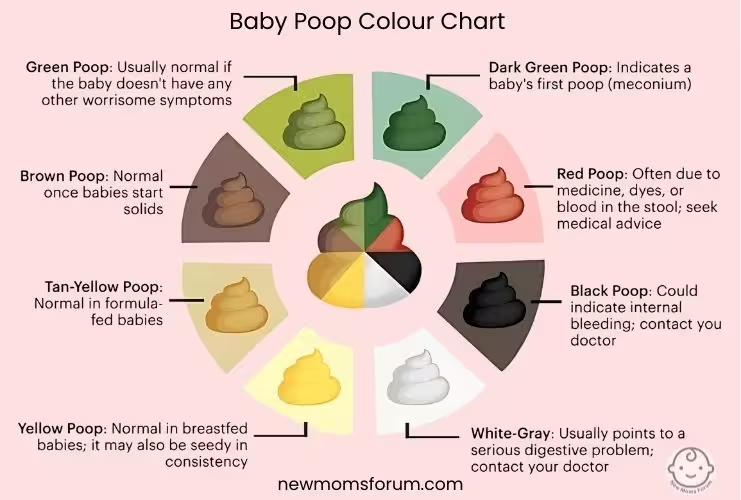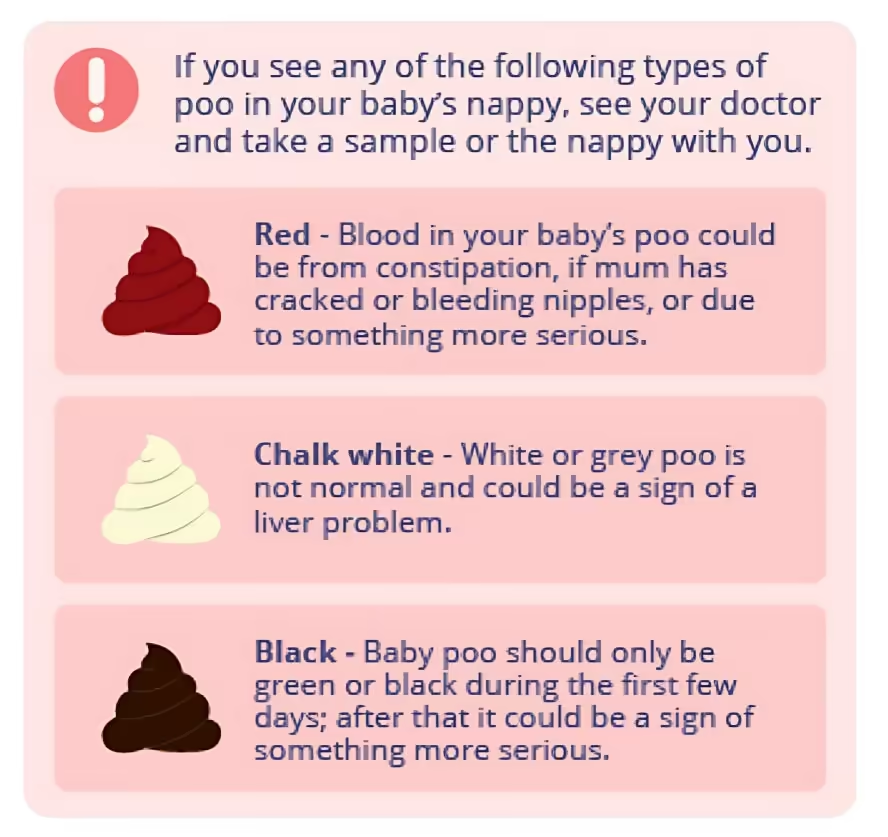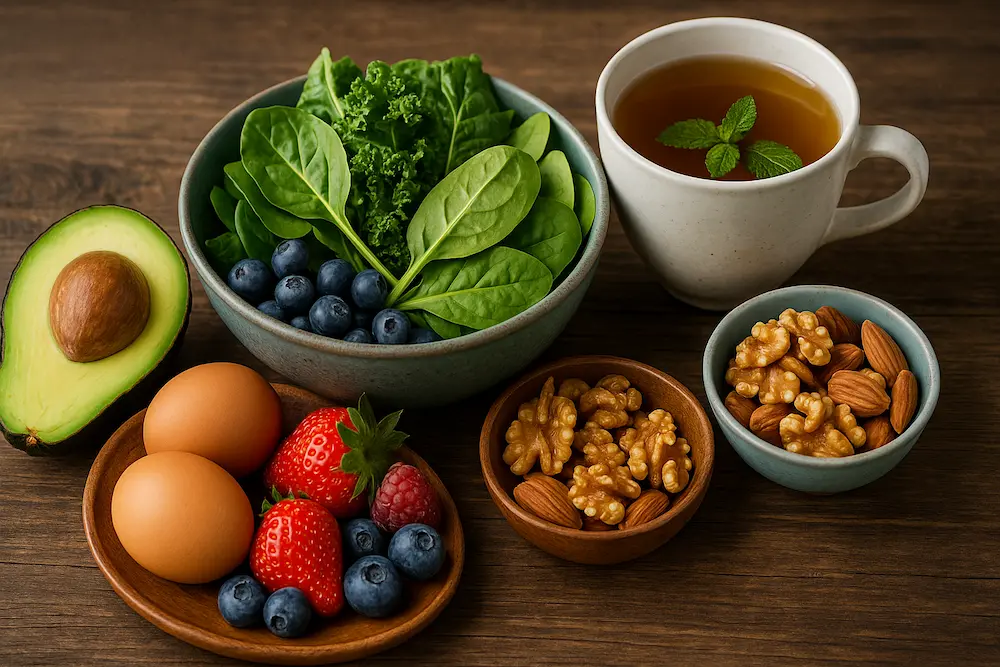How Often Should My Baby Poop? (And Other Glamorous Newborn Mysteries Solved)

Because nothing says parenthood like obsessing over poo.
You know you’re deep in newborn life when the highlight of your day is inspecting baby’s latest nappy offering like it’s an ancient artefact. You start discussing baby poop with your friends like it’s a fine wine. “Notes of mustard, with a splash of surprise
Colour, texture, frequency, it all suddenly matters. And if you've ever typed “green poop baby help??” into Google at some ungodly hour, don’t worry. You’re not broken. You’re just a parent now. 😊
Came for the poop. Stayed for the community.
We’ve just launched our brand-new forums, and you’re invited to be part of it from the very beginning. Become a founding member and join us on this wild ride together. No BS, no cliques, just women helping women through the chaos of motherhood. It’s free to join. Come say hi. Click here to get started 🤗
Here’s the down-and-dirty on baby poo: what’s normal, what’s not, and when to put down the wipes and phone your GP or healthcare practitioner.
How Often Should a Newborn Poop?
Short answer? Totally depends on the baby.
In the first 48 hours, your little one will drop their first masterpiece, meconium. It’s black, tar-like, and looks like it belongs on the underside of a grill. No need to freak out. It’s textbook newborn.
Then things get a bit more… unpredictable:
- Breastfed babies can poop after every feed or suddenly go days without a single squelch. Either way is fine, unless they seem uncomfy.
- Formula-fed babies tend to be a bit more routine. One to two poos a day is the average, but again, every bum is different.
By six weeks, some babies are daily dumpers. Others go a few days between and still smile through it all. If it’s soft and they’re happy, it’s working.
💡 Claire’s tip: If they’re feeding well, gaining weight, and not screaming like they’re auditioning for a soap opera, their poop game is probably on track.
Baby Poop Colour Chart: What’s Normal and What’s… Concerning

- Black: Meconium. Totally fine in the early days.
- Yellow/Mustard: The OG breastfed baby colour. Seedy, soft, vaguely sweet-smelling. Weirdly satisfying.
- Brown or Green: Fairly normal for formula-fed bubs. Unless there are other symptoms, carry on.
- Bright Green & Frothy: Could be a foremilk/hindmilk imbalance or a grumpy gut.
- Red, White or Grey: Stop scrolling. Ring your GP. These shades are not friends.
Texture and Smell: Yes, We’re Going There
Let’s talk squish:
- Soft and seedy: Breastfed classic.
- Thick and paste-like: Formula-fed territory.
- Slimy or mucousy: Might be teething. Might be a little virus.
- Smells like a bin in the sun: Welcome to solids and/or tummy bugs.
Signs of Constipation in Babies
Here’s the thing. Fewer poos doesn’t always mean constipation. But it might if:
- The poos are hard, dry, or pebble-shaped
- Bub is straining like they’re lifting a truck and nothing’s coming out
- Their tummy feels bloated or tight
- They’re cranky, clingy, and not their usual cute self
If it’s been three days with no poop and you’re seeing any of the above, ring your child health nurse or GP for a chat.
Explosive Poops and the Legendary Blowout
Yes, poonamis are a thing. No, you’re not overreacting.
One minute you’re cuddling peacefully. Next, you’re hose-blasting the pram liner. It’s wild, but it’s usually just your baby’s digestion still figuring things out.
Loose poop can be normal, especially if you’re breastfeeding. But if it’s super watery, constant, or comes with fever, vomiting, or dehydration signs, don’t guess, get advice.
When to Worry (and When to Breathe)

Call in the pros if you spot:
- Blood in the poo (even a streak)
- White, chalky, or grey poop
- Big changes in frequency with obvious discomfort
- Persistent diarrhoea
- Your gut says something’s not right
Yep, parent instinct is real. Trust it.
FAQs
Because everybody needs a quick FAQ on baby poop!
Is it normal for my newborn to poop after every feed?
Yes, especially in the early weeks. Breastfed babies often poop after every feed because breast milk is easily digested and moves quickly through their tiny systems. Formula-fed babies might poop less often, maybe once a day or every couple of days, and that’s usually fine too. What matters most is the consistency and your baby’s comfort.
Why hasn’t my baby pooped in 2 days?
If your baby is breastfed and otherwise happy, gaining weight, and feeding well, not pooping for a couple of days can be totally normal. Their bodies are just super efficient at absorbing nutrients. However, if your baby seems uncomfortable, has a hard tummy, or is straining with no result, it’s worth chatting to your GP or child health nurse.
What does green baby poop mean?
Green poop can be caused by a few things. It might be from iron in formula or vitamins, or from your baby swallowing extra mucus during a cold. In breastfed babies, it could be a sign they’re getting more foremilk than hindmilk. Usually, green poo isn’t a concern unless it’s frothy, very watery, or your baby seems unwell.
How do I know if my baby is constipated or just gassy?
Constipated babies often pass small, hard, pellet-like poos and may go several days without a bowel movement. They might also seem uncomfortable or cry while trying to go. Gassy babies, on the other hand, might pass wind frequently, squirm a lot, or have a bloated tummy, but their poo is usually soft and regular. When in doubt, trust your instincts and check with a healthcare provider.
What baby poop colour is considered an emergency?
Call your doctor right away if you see:
- Red poop, which might mean blood
- White or grey poop, which could signal a liver issue
- Black poop (after the first few days), which might be digested blood
These colours aren’t typical and should always be checked by a professional.
Red, white, or grey. These are your cue to call your GP, stat.
Final Thoughts: You’re Doing Great
You didn’t sign up to be a nappy inspector, but here we are. Covered in wipes, second-guessing everything yellow, and wondering how one tiny human can make so much mess.
If your baby’s eating, growing, and not howling through the night (or at least not because of their bowels), you’re probably smashing it, even if the latest nappy looked like something out of a sci-fi movie.
Got a wild poop tale? An epic blowout survival story? A nappy hack we all need? Drop it in the comments. We’re in the trenches together.
If you need help or have questions, consider joining our community and posting in our forums. We're here and ready to help.






Responses